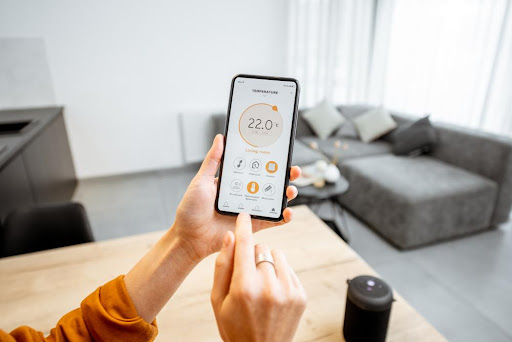
For most of the calendar year, the conditions outside determine how we heat and cool our interiors. Toward the beginning and end of summer, we generally keep the air conditioner at a moderate temperature. When the temperatures spike, so do our energy costs. Likewise, it can take a good amount of energy come wintertime to keep your home warm during those intensely cold months.
When estimating home energy use, many homeowners find themselves in the dark. An inefficient or aging HVAC system can throw off your estimates and put a significant dent in your bank account when the utility bill arrives. Knowing how much energy your appliances, air conditioning, and heating systems are using can be challenging without the proper information. There are many ways to determine what your heating and cooling systems are costing you. From simply scaling back appliance usage to installing a ductless mini split system, you have options to reduce energy use and costs. This guide will provide tips for estimating home energy use so that you can make more informed decisions about your budget.
Why Is It Important to Estimate Your Home Energy Use?
In many cases, homeowners are unaware of how much energy their appliances, air conditioning, and heating systems use. Without estimating home energy use, it can be challenging to make informed decisions about using these appliances. Estimating home energy use is a good start for any homeowner who wants to save money on their monthly utility bills. Knowing exactly how much energy each product uses can help motivate you to become more energy-efficient. With the right information, you can make informed decisions about your heating and cooling systems and make adjustments, saving a significant amount of money on your monthly utility bills.
What Methods Can You Use to Estimate Home Energy Use?
There are a number of different methods you can use to estimate your home energy use. A straightforward way to get a ballpark estimate is to scale back your appliance usage by turning off or unplugging appliances when they are not in use. You can then compare your month-over-month costs. This will give you a better idea of a baseline for energy consumption. When you see this difference, you’ll want to train yourself (and your family) to continue working towards lower energy use.
Another way you can estimate energy use is to install a smart meter. Smart meters allow you to track your energy consumption in real time, so you can see how much energy each appliance uses. If you are looking for a more comprehensive way to estimate your home energy use, you can install a home energy monitor. Home energy monitors track your electricity usage hour-by-hour and give you a detailed breakdown of how much energy each appliance uses. This information can help you identify which appliances are using the most energy and find ways to reduce your energy consumption.

Tips for Reducing Home Energy Consumption
The simplest and easiest way to reduce home energy consumption is simply powering down. Turn off the lights when you leave a room. Unplug appliances and electronics that draw energy even when they are not in use. Adjust the thermostat a notch or two. Installing a smart thermostat can also help you save a great deal of energy. In winter, you can set your smart thermostat to automatically lower the temperature when you sleep or not at home. It will then raise the temperature to a comfortable level when you’re awake at home.
Additionally, some home upgrades you can implement will help reduce the amount of energy your air conditioning and heating units are using. Mini split systems and central split systems are energy-efficient ways to section out the heating and air conditioning use to certain rooms in your home. There is always that one room in the house that never seems to be occupied, right? With a mini split or a Flexx system, you can take control of the energy your HVAC system is using.
Advantages of a Mini Split System
If you are dedicated to reducing your overall energy costs, you can install a dual zone mini split system. Ductless mini split systems provide individualized cooling and heating for each room in your home, so you can customize the temperature to meet your needs. This system can be more expensive than your typical HVAC system to install, but it is worth the investment when you save money on your monthly utility bills.
Advantages of a Gree Flexx System
Similar to the mini split system, the Gree Flexx central split system has the unique ability to create temperature-controlled environments in any size home or commercial space. This system is discreet, ultra-efficient, and offers superior comfort.

How to Save Money on Your Monthly Utility Bills
As someone who is dedicated to reducing your utility bills and doing everything you can to be more eco-friendly, it’s essential that you find ways to reduce your home energy consumption. Monitoring your home energy use is the first step in helping you make informed decisions about managing and lowering these costs. You’ll also be reducing your carbon footprint. Armed with this knowledge, you can then take different steps, such as installing smart home devices and upgrading to more energy-efficient systems. By taking these small steps, you’ll be able to start saving money on your monthly utility bills in no time.
